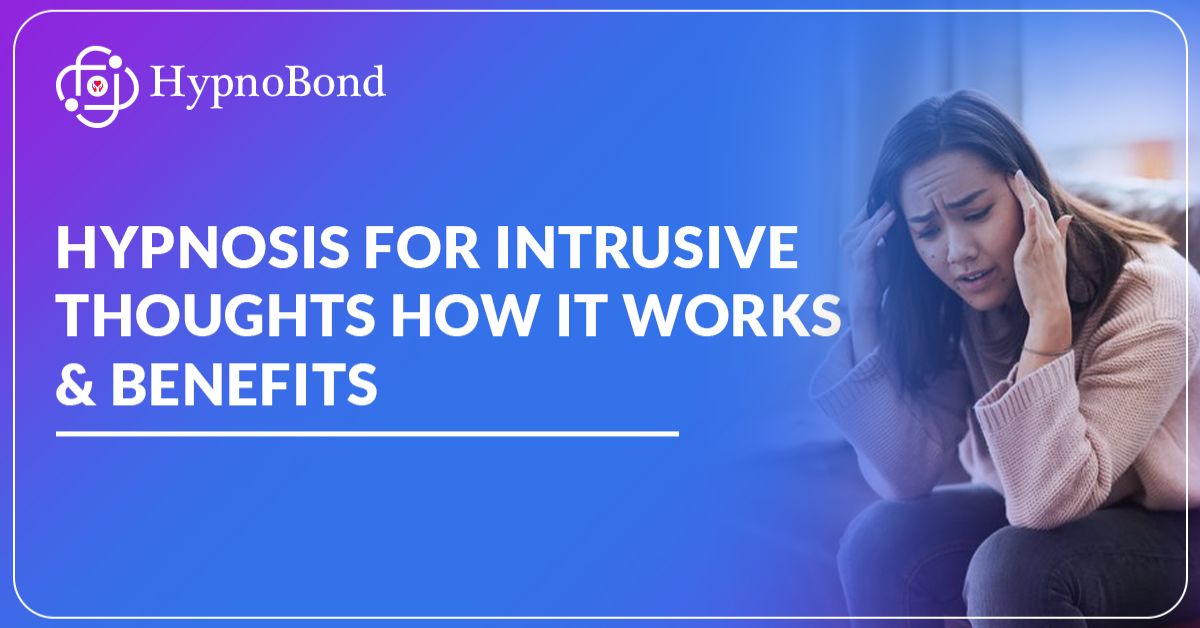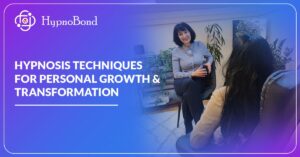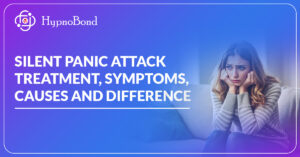Tired of intrusive thoughts controlling your day? While therapy and medication help some, they’re not the only answer. Hypnosis for intrusive thoughts targets the root cause—your subconscious—helping you break free from mental loops for good. This article covers how hypnotherapy works, why it’s effective, and what to expect in a session. If you’re ready to reclaim your mental space, let’s dive in.
What Are Intrusive Thoughts?
Intrusive thoughts are distressing ideas or images that enter the mind without warning. They often trigger intense discomfort, especially when associated with obsessive-compulsive disorder (OCD) or high anxiety levels. Whether they stem from overthinking, past trauma, or underlying fears, these thoughts can create a cycle that’s difficult to break.
Fortunately, hypnotherapy for OCD is emerging as a powerful therapeutic tool, helping individuals reframe the mental patterns that feed these thoughts and develop healthier coping mechanisms.

How Hypnotherapy for OCD Works
Hypnosis for OCD works by guiding individuals into a deeply relaxed, trance-like state. In this state, the mind becomes more open to positive suggestions, helping to:
- Reframe negative thought loops
- Reduce anxiety triggers
- Strengthen mental resilience
Research suggests that hypnosis can help stop intrusive thoughts by rewiring automatic responses in the brain. Unlike willpower-based techniques, it works on a subconscious level, making changes feel more natural and lasting.
Self-Hypnosis Techniques for Intrusive Thoughts
Alongside professional sessions, self-hypnosis techniques for intrusive thoughts empower individuals to manage their symptoms between appointments. Techniques may include:
- Guided visualization to neutralize triggering thoughts
- Anchoring calming responses through touch or breath
- Repetition of affirmations in a trance-like state to rewire the brain’s responses
- Deep breathing and body scanning to relax the nervous system
- Visualisation exercises to mentally shift focus away from intrusive thoughts
- Affirmations or mantras repeated in a relaxed state to retrain the brain
Self-hypnosis is simple to learn and incredibly effective when practiced regularly, especially when paired with meditation.

Meditation for Self-Confidence and Calm
Confidence plays a crucial role in managing intrusive thoughts. When a person feels emotionally grounded, these thoughts lose their power. That’s why confidence meditation and meditation for self-confidence are valuable tools in the recovery journey.
Through regular practice, meditation builds a stronger internal sense of self, reduces reactivity, and encourages mindfulness — a quality proven to reduce overthinking and emotional spirals.
Read More: Hypnotherapy for ADHD: Drug-Free Focus & Calm Method
Hypnosis for Sleep Disorders Caused by Intrusive Thoughts
When intrusive thoughts attack at bedtime, they can steal precious sleep and create a cycle of exhaustion and increased anxiety. Hypnotherapy offers specific solutions for this common problem through:
The 3-Part Sleep Hypnosis Protocol:
- Mental File Cabinet Technique: Visualize filing away worries until morning
- Protective Imagery: Imagine a mental forcefield blocking intrusive thoughts
- Body Scan Relaxation: Systematically release physical tension
A 2023 sleep study found that participants using hypnosis for sleep-related intrusive thoughts fell asleep 40% faster and had 30% fewer nighttime awakenings. Unlike sleep medications, these benefits compound over time as the brain learns new, healthier sleep patterns.

Can Children and Teens Benefit from Hypnosis for Intrusive Thoughts?
Young minds are particularly receptive to hypnosis for intrusive thoughts. Children’s natural imagination and less rigid thought patterns make them ideal candidates for hypnotherapy. Common successful applications include:
- For young children (6-12): Story-based metaphors where they “train their brain dragon” to be calm
- For teens: More direct suggestion therapy combined with self-hypnosis training
A Stanford Child Anxiety Study found hypnotherapy reduced intrusive thoughts in children by 68% compared to 42% with talk therapy alone. Because it’s drug-free and non-invasive, many parents prefer hypnosis as a first-line treatment for childhood anxiety and OCD symptoms.
Hypnotherapy for Trauma-Related Intrusive Thoughts
Traumatic memories often resurface as intrusive thoughts, carrying the original emotional intensity. Hypnosis for intrusive thoughts stemming from trauma works differently than standard OCD treatment by:
- Safely accessing the traumatic memory without full re-experiencing
- Changing its emotional coding from distressing to neutral
- Reintegrating the memory without its painful charge
The VA Hospital System reports that hypnosis accelerates trauma processing by 30-40% compared to traditional exposure therapies alone. This makes it particularly valuable for PTSD patients plagued by flashbacks and intrusive memories.

Overthinking and Anxiety Relief Through Hypnosis
Overthinking and anxiety often walk hand in hand with intrusive thoughts. The mind becomes stuck in loops, questioning and analysing thoughts that should’ve passed. Hypnotherapy helps interrupt this loop.
As part of a tailored approach, hypnotherapy offers overthinking and anxiety relief by introducing calm at a subconscious level. Many find their mind becomes clearer, less reactive, and more in control — even in high-pressure situations.
When Substance Abuse and Anxiety Disorders Intersect
In some cases, intrusive thoughts are linked with deeper struggles, including substance abuse and anxiety disorders. Individuals may use substances to numb distressing thoughts or escape overwhelming emotions. But this often creates a dangerous cycle.
Hypnotherapy, when combined with comprehensive care, helps address root causes. By healing subconscious fears and empowering new emotional responses, hypnosis becomes a transformative tool for those on a dual recovery path.

Common Myths About Hypnosis for Intrusive Thoughts (Debunked)
Myth 1: You lose control under hypnosis.
Truth: You remain fully aware and can’t be made to do anything against your will
Myth 2: It’s just relaxation.
Truth: EEG studies prove hypnosis creates unique brain states different from mere relaxation
Myth 3: Only weak-minded people are suggestible
Truth: Intelligence and hypnotizability are unrelated – many geniuses were excellent hypnotic subjects
Myth 4: Results don’t last
Truth: When properly done, hypnosis creates permanent subconscious changes
Understanding these truths helps more people benefit from this powerful therapy without unnecessary fears.
Read More: How to Break a Soul Tie: Steps for Emotional & Spiritual Healing








